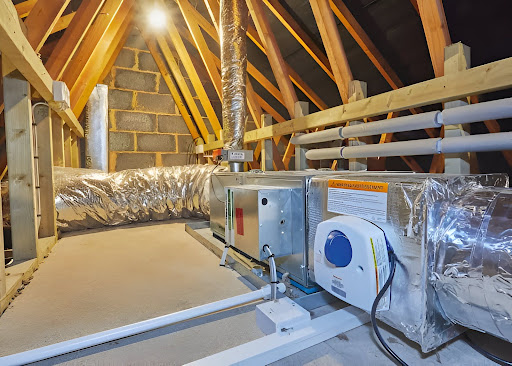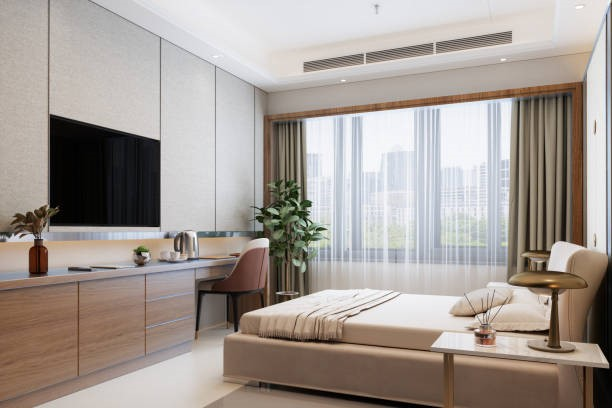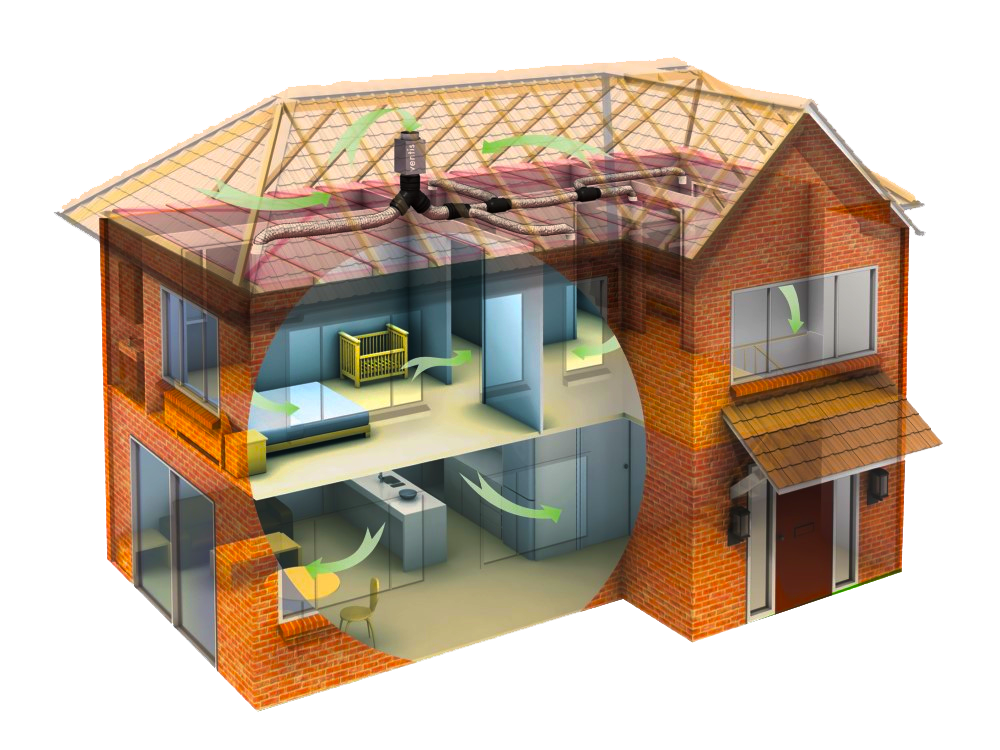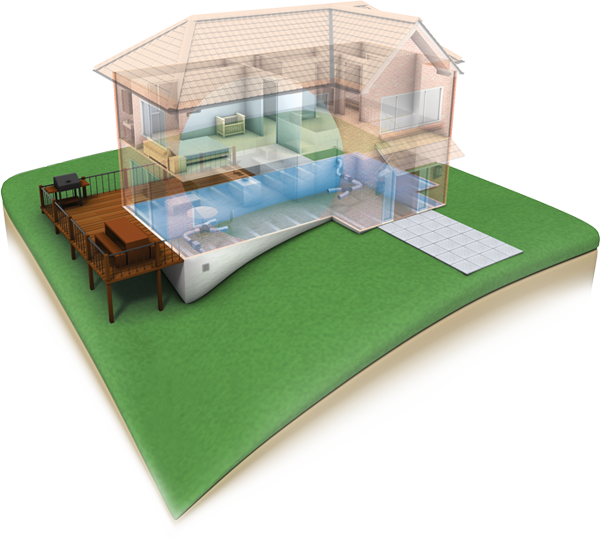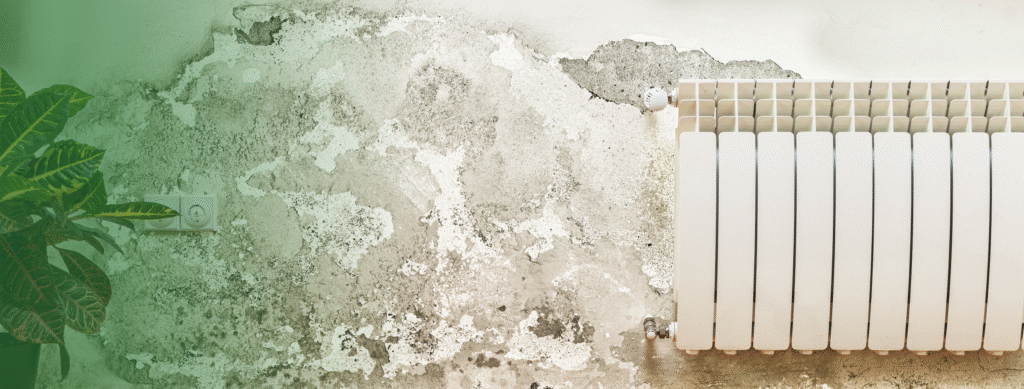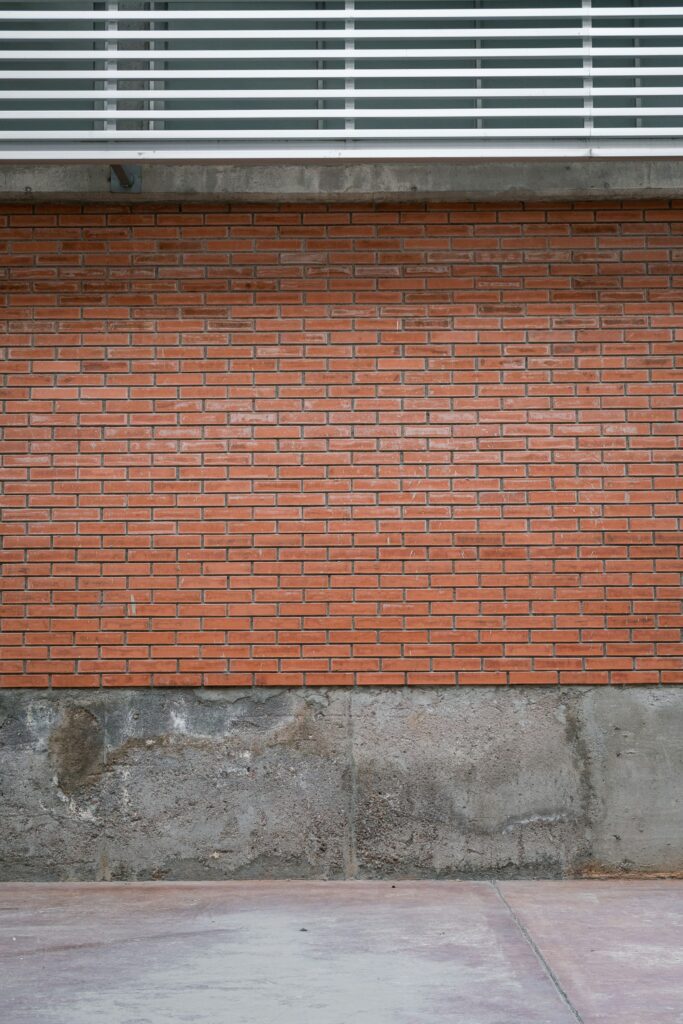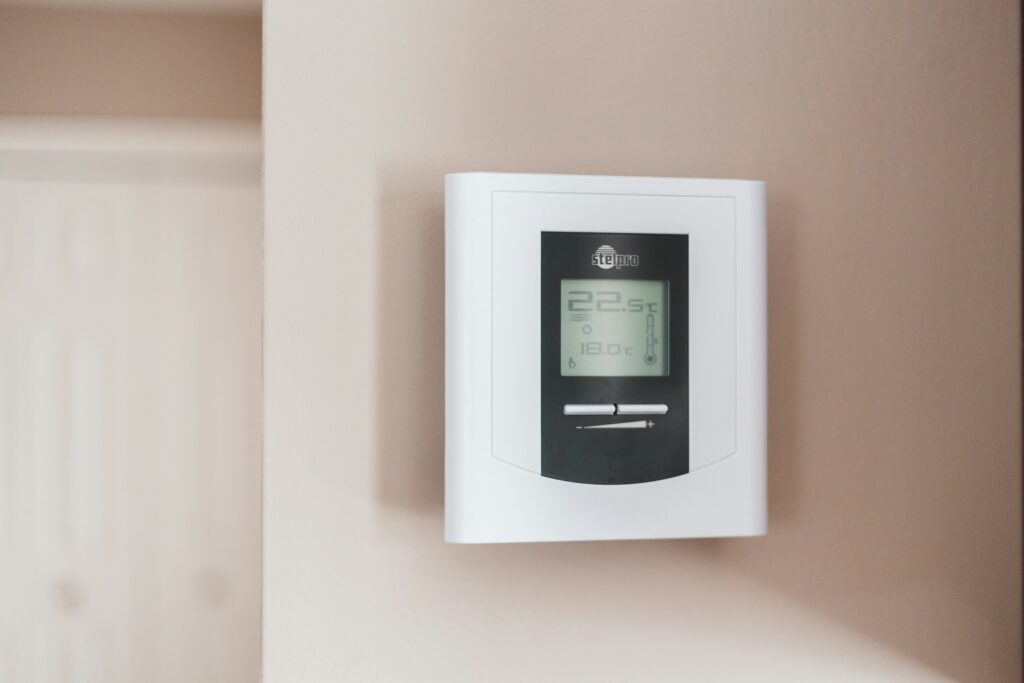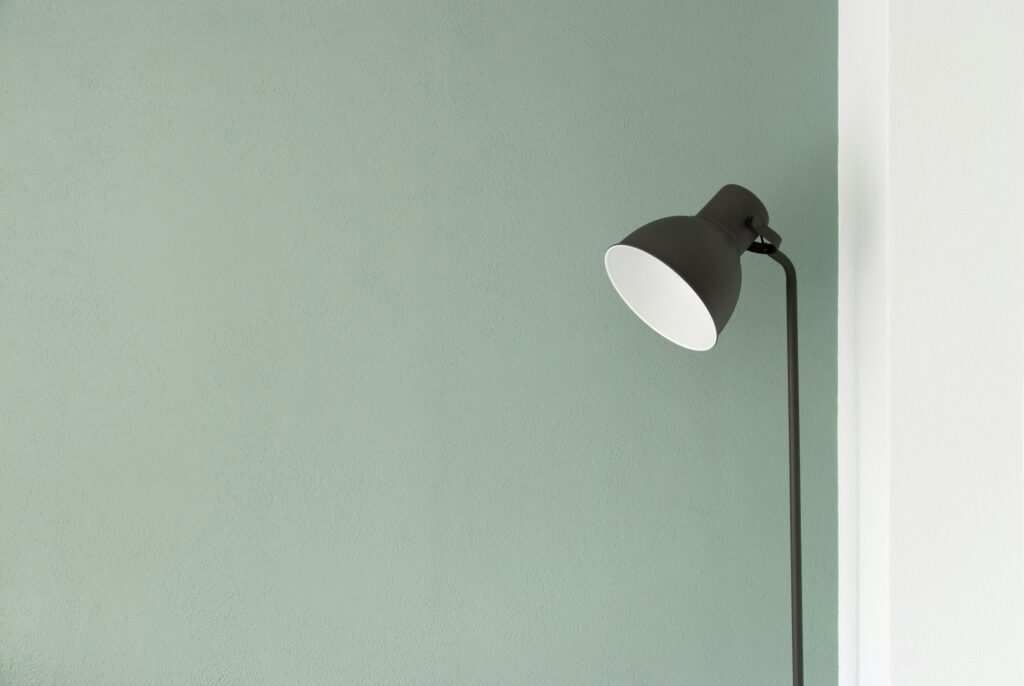An energy recovery ventilation system is a smart way to improve the air quality in your home while saving energy. It works by exchanging stale indoor air with fresh outdoor air, while also capturing energy from the outgoing air to warm or cool the incoming air. This home ventilation system has many benefits, like reducing energy costs and improving comfort, but it also has some downsides. In this blog, we will explore the pros and cons of using an energy recovery ventilation system to help you decide if it’s the right choice for your home.
How Energy Recovery Ventilation Systems Work?

An energy recovery ventilation system is a type of ventilation system that helps control the air inside a building. It does this by bringing in fresh air from outside and removing stale air from inside.
When the energy recovery ventilation system brings in fresh air from outside, it passes this air through a heat exchanger. The heat exchanger takes some of the heat from the air that is being removed from the building and transfers it to the incoming fresh air. This helps to warm up the fresh air in the winter and cool it down in the summer.
At the same time, the energy recovery ventilation system removes stale air from inside the building. This air passes through the heat exchanger, where some of its heat is transferred to the incoming fresh air. The stale air is then expelled to the outside.
By transferring heat between the incoming and outgoing air, the energy recovery ventilation system helps to reduce the amount of energy needed to heat or cool the building. This can save a lot of money on energy bills over time.
The energy recovery ventilation system also helps to improve the air quality inside the building. Bringing in fresh air from outside and removing stale air helps to reduce the buildup of pollutants, odours, and moisture. This can create a healthier and more comfortable indoor environment.
What Is an Energy Recovery Ventilation System Used For?

An energy recovery home ventilation system can be used in homes to help control the air quality and temperature. It can be installed in a house to bring in fresh air from outside while also removing stale air from inside. This helps keep the air in the home clean and comfortable.
Offices and other commercial buildings can also benefit from an energy recovery ventilation system. It can be used to maintain good air quality for employees and visitors. The system helps control humidity levels and temperature to create a pleasant indoor environment. This is especially useful in buildings where many people gather.
Schools are another place where an energy recovery ventilation system is helpful. It can be used to provide fresh air to classrooms and other areas. The system helps remove odours, pollutants, and excess moisture to keep the air clean and comfortable for students and teachers. This can help improve focus and learning.
The Pros of Energy Recovery Ventilation System
Improved Indoor Air Quality
An energy recovery ventilation system helps keep the air inside your home clean and fresh. It brings in fresh air from outside and removes stale air from inside. This helps get rid of things like dust, pollen, and other pollutants that can make the air inside your home dirty.
Energy Savings
An energy recovery ventilation system can also help you save money on your energy bills. It uses the heat or coolness from the air being removed from your home to warm or cool the fresh air coming in. This means your heating and cooling system doesn’t have to work as hard, which saves you energy and money.
Reduced Humidity
An energy recovery ventilation system can also help control the humidity levels in your home. It removes excess moisture from the air being removed from your home and transfers it to the fresh air coming in. This helps prevent problems like mould and mildew that can happen when there is too much moisture in the air.
Improved Comfort
Finally, an energy recovery ventilation system can make your home more comfortable. Bringing in fresh air and controlling humidity levels helps create a more pleasant indoor environment. You’ll be able to breathe easier and feel more comfortable in your home.
The Cons of Energy Recovery Ventilation System

The energy recovery ventilation system (ERV) has several notable drawbacks that potential users should consider. One significant con is the high installation and running costs associated with these systems. Installing an ERV requires specialised equipment and professional installation, which can be quite expensive.
For a typical home, the cost of the system itself can start at several thousand dollars, and when factoring in installation, this price can easily double. This upfront investment can be a barrier for many homeowners, especially those on a tight budget. Additionally, the ongoing energy costs, while generally lower than traditional ventilation systems, can still add up over time, particularly if the system is not operating efficiently.
Another important disadvantage is the need for regular maintenance. While ERVs are designed to be low maintenance, they are not maintenance-free. Homeowners must regularly change filters, typically every three to six months, to ensure the system operates effectively. Neglecting this maintenance can lead to reduced efficiency, higher energy bills, and even health problems if the system becomes contaminated with mould or other harmful substances. This ongoing requirement can be inconvenient and may deter some individuals from opting for an energy recovery ventilation system.
Noise is also a common issue with energy recovery ventilation systems. Many users report that these systems can be noisy during operation. If not designed or installed properly, the noise from the fans can travel through the ductwork, creating disturbances in living spaces. This can be particularly problematic in quiet environments where the sound of the system can be disruptive.
Finally, the complex installation process can pose challenges, especially in older homes. Retrofitting an ERV into an existing structure may require significant modifications, including the installation of new ductwork. This ongoing requirement can be inconvenient and may deter some individuals from opting for an energy recovery home ventilation system.
Advantages of Mechanical Ventilation Over Natural Ventilation
Mechanical ventilation uses fans and machines to move air in and out of a building. One big advantage of this system is that it can control the air flow better than natural ventilation. In natural ventilation, air moves through windows and doors, which can be unpredictable. With mechanical systems, you can set the amount of air that comes in and goes out. This helps keep indoor air fresh and comfortable all year round.
Another benefit of mechanical ventilation is that it can filter the air more effectively. Many mechanical systems come with filters that remove dust, pollen, and other particles from the air. This is especially important for people with allergies or asthma. In contrast, natural ventilation might let in outdoor air that carries allergens and pollutants. By using a mechanical system, you can ensure that the air inside your home is cleaner and healthier.
An energy recovery ventilation system is another great feature of mechanical ventilation. This system captures heat from the air that is being exhausted and uses it to warm the incoming air. This means you can save energy and reduce heating costs during the colder months. Natural ventilation does not have this capability, so it may lead to higher energy bills, especially in extreme weather conditions.
Finally, mechanical ventilation can provide consistent temperature control. With natural ventilation, changes in the weather can cause indoor temperatures to fluctuate. Mechanical systems can help maintain a steady temperature, making your home more comfortable. This is particularly useful in places with hot summers or cold winters, where keeping a stable indoor climate is important for comfort and energy efficiency
Get Quality Home and Subfloor Ventilation Systems With Ventis
Ventis Ventilation System is a whole-house ventilation solution that improves indoor air quality and reduces moisture, odours, and allergens in your home. It utilises the free, naturally beneficial air from your roof space or outside, purifies it, and introduces it into your home. This helps flush out damp, stale air and creates positive pressure inside the home.
The Ventis system comes in various sizes to suit different home configurations. It features a standard F7 (MERV 13) filter, with an option to upgrade to a premium filter. The system is designed and made in Australia, with intelligent software that refines each system for every home. It comes with a 3-year onsite warranty and a range of accessories to upgrade the system if required.
Using the Subfloor Ventilation System provides several benefits, including reducing damp, mould, humidity, and condensation. It helps with asthma and allergies by reducing airborne allergens, odours, and dust mite populations. Additionally, it acts as an eco-friendly home heating device by utilising the warm air from the roof space.
If you’re interested in improving your home’s indoor air quality and reducing moisture, odours, and allergens, contact us today to get the Ventis home or subfloor ventilation system installed in your home. Our team will guide you through the process and ensure your system is optimised for your home’s specific needs.

Final Thoughts on Energy Recovery Ventilation Systems
An energy recovery ventilation system has both advantages and disadvantages. On the positive side, it helps improve indoor air quality by bringing in fresh air while reducing energy costs by reusing heat. However, it can be expensive to install and may require regular maintenance. Understanding these pros and cons can help you decide if an energy recovery ventilation system by Ventis is the right choice for your home.
FAQ's
What is an energy recovery ventilation system (ERV)?
An Energy Recovery Ventilation System, also known as an ERV, is a system that helps to improve indoor air quality by providing fresh air while also recovering heat or energy from the exhaust air.
How does an ERV work?
An ERV works by transferring heat or energy from the exhaust air leaving a building to the fresh air being brought into the building. This helps to maintain comfortable temperature levels while also saving energy.
What are the benefits of using a heat or energy recovery ventilation system?
Using a heat or energy recovery ventilation system can help improve indoor air quality, regulate humidity levels, reduce energy costs, and ensure a continuous supply of fresh air in a building.
What is a heat energy recovery ventilator?
A heat recovery ventilator is a device that brings fresh outside air into a home while using the heat from the stale air being expelled to warm up the incoming air. This helps reduce the amount of energy needed for air conditioning and heating. By transferring heat from the exhaust air to the supply air, a heat recovery ventilator can improve indoor air quality while saving energy.
How can an ERV help in saving energy?
An ERV helps in saving energy by using the heat or energy from the exhaust air to precondition the fresh air coming into the building, reducing the load on heating and cooling systems.
Does an ERV require maintenance?
Yes, like any system, an ERV requires regular maintenance to ensure optimal performance. This includes changing filters, cleaning air vents, and periodic inspections by a professional technician.
What are the benefits of using an ERV system?
Using an ERV system can help improve indoor air quality, maintain comfortable humidity levels, reduce energy demand for heating and cooling, and enhance overall energy efficiency in buildings.
What is the role of heat recovery in an ERV system?
Heat recovery in an ERV system involves capturing thermal energy from the exhaust air stream and transferring it to the incoming fresh air stream, reducing the energy required to heat or cool the building.
How does an ERV system impact energy usage?
An ERV system helps reduce energy usage by recovering and reusing thermal energy that would otherwise be lost during the ventilation process, making it a more energy-efficient solution for providing fresh air ventilation.
What are the potential drawbacks of using an ERV system?
One potential drawback of using an ERV system is the initial energy penalty required for installation, although the long-term energy savings and improved air quality typically outweigh this initial investment.
